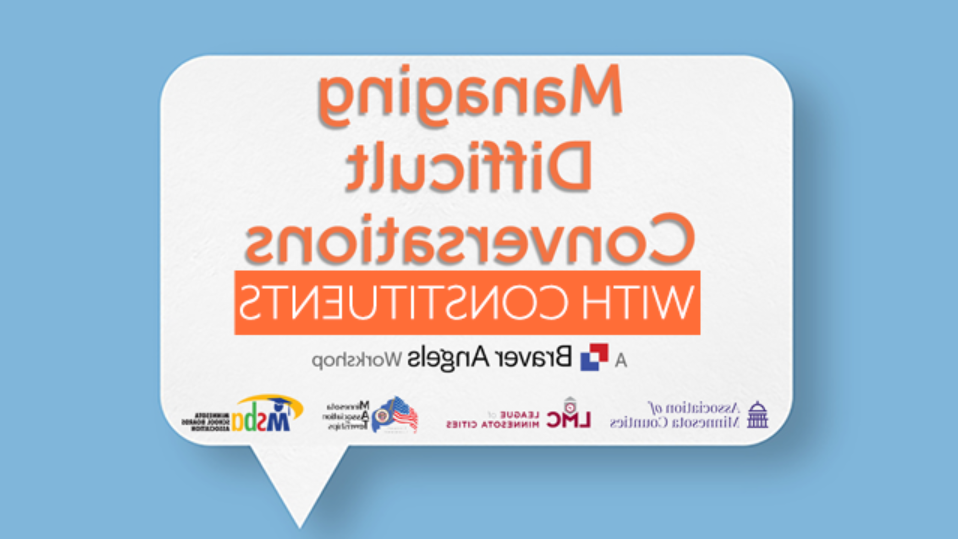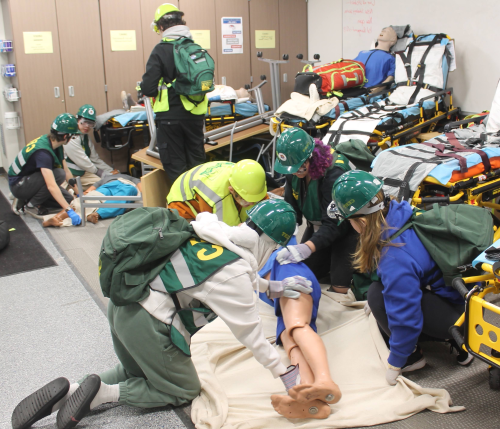The requirement to provide paid Emergency Paid Sick and the expanded Family Medical leaves under the Families First Coronavirus Response Act (FFCRA) of 2020 expired on Dec. 31, 2020. Cities may recall language in the Families First Coronavirus Response Act in 2020 prohibited local governmental employers from receiving any benefit of the payroll tax credits for providing paid sick and paid emergency family leave. While payroll tax credits were not an option for local governments in 2020, qualified sick and family leave wages were not subject to the employer share of social security tax.
However, the American Rescue Act Plan of 2021 now includes a measure that, effective April 1 through Sept. 30, 2021, makes state and local governments fully eligible for the paid leave reimbursable tax credits under the Families First Coronavirus Relief Act (FFCRA). The tax credit will apply against Medicare federal taxes on a quarterly basis.
While this is an optional benefit for city employers to offer to employees (i.e., NOT required), failure to comply with all leave requirements of the American Rescue Plan Act disqualifies a city from obtaining the credit. For cities opting to provide this FFCRA-type leave to employees in 2021, there are new requirements for both leaves for eligibility for the payroll tax credits.
We understand guidance will be forthcoming from various federal agencies, including the Department of Labor, so we will update these FAQs when such guidance is available. The League encourages cities to work with their city attorney in implementing the new law and adapting any policies.
For policy samples and other guidance relating FFCRA leave and American Rescue Plan Act of 2021 requirements, please contact [email protected] or [email protected].
Get answers to these FAQs about FFCRA leave and the American Rescue Plan Act of 2021:
Q1. As a city, am I required to implement this FFCRA type leave for my employees in 2021?
Q2. What are the new requirements regarding the 2021 FFCRA type leave?
Q3. How does a city agree to offer these additional leaves and receive the tax credit?
Q1. As a city, am I required to implement this FFCRA type leave for my employees in 2021?
A1. No, offering the FFCRA type leaves to your employees is optional. To take advantage of the payroll tax credits, the city will need to comply with all aspects of the newly revised FFCRA leaves.
A great first step is to evaluate whether your city wishes to offer the FFCRA type leave for your employees in 2021. While some cities may wish to offer this benefit to help employees with COVID-19 leave needs for the period April 1, 2021 through Sept. 30, 2021, others may wish to either hold off until agency guidance provides additional clarification on leave details or simply not opt to take advantage of the tax credits. Some outstanding areas we are awaiting guidance on include:
- Whether the new law allows an employee with some use of FMLA already in the FMLA year period a total of 14 weeks (12 weeks of expanded Family Medical Leave plus 2 weeks of Emergency Paid Sick leave) or something more generous with a whole new allotment of 12 weeks of expanded FMLA. In the FFCRA of 2020, the DOL clearly limited the expanded and traditional FMLA to 12 weeks total. Our best information at this point is that the 2021 law only provides a total of 12 weeks of expanded FML and FMLA combined, but we await further guidance to clarify this issue.
- If there is a sequence of the leave that must be used. Arguably, it would seem if an employer provides the optional leaves, those would be used prior to any other city paid leave. Practically speaking, it seems cities opting to offer this FFCRA type leave in 2021 may want to guide employees to exhaust the two week Emergency Paid Sick Leave first since in many cases employees receive 100% of pay (max of $511/day) before then using the expanded family leave, paid at two-thirds (max of $200/day) for the same qualifying reason.
- At this point in time, it is not totally clear whether an employer can provide only one type of leave, such as only Emergency Paid Sick Leave, and not the expanded Family Medical Leave. The law notes the tax credit is only available to employers who uniformly provide leave to all employees, without discrimination against certain categories of workers such as highly compensated employees, full-time employees, or on the basis of seniority. A conservative approach until we receive further guidance, could be to provide both types of leaves to your employees if your city decides to offer the FFRCA type leave at this time. See non-discrimination rules under FAQ #A2-A.
If a city opts to hold off on implementing this leave for 2021, it is not clear how to handle the leave should the city opt to implement the benefit later. For example, could a city track the leave used by employees for the period until the city implements, and then retroactively adjust employee balances once the benefit is implemented. The city would need to also ensure documentation is utilized to substantiate the leave and tax credits taken. Consultation with the city attorney is important as the city determines next steps.
Another option is for the city to offer some type of leave similar to what is outlined in the new law, with the expectation that the city will not receive the tax credits but retains control over the type and amount of leave it will offer to employees. Some cities may instead choose not to offer any additional leaves other than what the city typically offers under non-pandemic times, which again would not be eligible for tax credits. The benefit of offering some leave beyond what a city typically offers is that the additional leave may encourage ill employees to stay home as well as encourage employees to become vaccinated.
Q2. What are the new requirements regarding the 2021 FFCRA type leave?
A2-A. As noted in FAQ #Q1 (and unlike the FFCRA leave required in 2020 that expired at the end of 2020), this leave benefit is optional to employers in 2021. We anticipate additional agency guidance in the future but provided below is a summary of what we know now.
Non-discrimination rules — Employers will not be eligible for the payroll tax credit if they discriminate in awarding the FFCRA type leave in favor of highly compensated employees, full-time employees, or on the basis of seniority. Therefore, cities voluntarily providing FFCRA leave in 2021 conservatively may want to grant leave across the board. We also await further guidance on whether a city may offer only one type of leave (such as only Emergency Paid Sick Leave, and not the expanded FML) to employees.
A2-B. Emergency Paid Sick Leave
The amount of Emergency Paid Sick Leave under the American Rescue Plan is two weeks (10 days) for the period April 1, 2021 through Sept. 30, 2021. Since the 2020 leave expired as of Dec. 31, 2020, if a city offers this leave to employees, the full 10 days/two weeks is available as of April 1, 2021.
The maximum tax credit for Emergency Paid Sick Leave wages remains at $2,000 or $5,110 per employees, depending on the type of leave taken.
Expanded qualifying reasons for leave — The American Rescue Plan Act broadens situations under which an employee is eligible to include employees:
- Seeking or awaiting the results of a test for or a diagnosis of COVID-19 when the employee has either been exposed to COVID-19 or the employer has requested the test or diagnosis.
- Obtaining the COVID-19 vaccine.
- Recovering from any injury, disability illness or condition related to COVID-19 immunization.
These three situations provide for a tax credit up to a cap of $511/day at the employee’s regular rate of pay ($5,110 in the aggregate).
The above-mentioned situations expand on the 2020 list of Emergency Paid Sick Leave situations. The following list continues to be eligible for Emergency Paid Sick Leave under the American Rescue Plan Act of 2021:
- An employee is subject to a federal, state, or local quarantine or isolation order related to COVID-19.
- Employee is paid at 100% and capped at $511 per day ($5,110 in the aggregate)
- Has been advised by a health care provider to self-quarantine.
- Employee is paid at 100% and capped at $511 per day ($5,110 in the aggregate).
- Is experiencing COVID-19 symptoms and seeking a medical diagnosis.
- Employee is paid at 100% and capped at $511 per day ($5,110 in the aggregate).
- Is caring for an individual who is subject to a COVID-19 quarantine or advised to self-quarantine.
- Employee is paid at 2/3 of their pay rate and capped at $200 per day ($2,000 in the aggregate).
- Is caring for a child whose school or daycare provider is closed or unavailable because of COVID-19.
- Employee is paid at 2/3 of their pay rate and capped at $200 per day ($2,000 in the aggregate).
- Is experiencing any other substantially similar condition specified by the US Secretary of Health and Human Services.
- Employee is paid at 2/3 of their pay rate and capped at $200 per day ($2,000 in the aggregate).
While we await agency guidance, cities opting to offer this paid leave will want to maintain documentation for substantiation of the tax credit for at least 4 years after the date the tax becomes due or is paid, whichever comes later.
Again, the federal tax credit is only available for leave under for the FFCRA reasons spelled out in the American Rescue Plan Act of 2021 and outlined in these FAQs. Without the benefit of agency guidance at this time, we have prepared a model leave form for your consideration including information reflecting the guidance currently available:
A2-C. Emergency Family Medical Leave (Expanded Family Medical Leave)
Expanded qualifying reasons for leave — Previously the FFCRA leave of 2020 only permitted expanded family medical leave for an employee’s time off to care for a child whose school or daycare closed due to COVID-19 reasons.
The 2021 law now allows the expanded family medical leave for any of the qualifying reasons found under Paid Sick Leave (which in 2021 have been expanded as well — See FAQ #A2-B). Thus, the 2021 expanded Family Medical Leave can now be taken for any of these 9 reasons for the period April 1, 2021-Sept. 30, 2021:
- An employee is subject to a federal, state, or local quarantine or isolation order related to COVID-19.
- Has been advised by a health care provider to self-quarantine.
- Is experiencing COVID-19 symptoms and seeking a medical diagnosis.
- Is caring for an individual who is subject to a COVID-19 quarantine or advised to self-quarantine.
- Is caring for a child whose school or daycare provider is closed or unavailable because of COVID-19.
- Is experiencing any other substantially similar condition specified by the US Secretary of Health and Human Services.
- An employee who is seeking or waiting for the results of a test for or a diagnosis of COVID-19 when the employee has either been exposed to COVID-19 or the employer has requested the test or diagnosis.
- An employee who is obtaining the COVID-19 vaccine.
- If an employee is recovering from any injury, disability illness or condition related to COVID-19 immunization.
Increased paid weeks from 10 weeks to 12 — Previously the FFCRA leave of 2020 required the first two weeks, be either unpaid or an employee could elect to use 10 days of Emergency Paid Sick Leave; leaving employees with essentially only 10 weeks of the paid expanded Family Medical Leave. This two-week unpaid requirement has been eliminated in the 2021 American Rescue Plan Act, so effective April 1, 2021 through Sept. 30, 2021, if an employee qualifies for the expanded Family Medical Leave, and assuming the employee has not previously used any Family Medical Leave, then he or she will have the full 12 weeks of leave paid at the 2/3 rate of their regular rate of pay. In 2021, looking at the two leaves together (Emergency Paid Sick Leave and expanded FML), an employee could receive up to 14 weeks of paid leave if he or she, for example, contracted COVID-19 and then is subject to quarantine by a health care provider. In this scenario, the employee could be eligible for two weeks at their regular rate of pay as Emergency Paid Sick leave and up to 12 weeks at two thirds of their regular rate of pay under expanded Family Medical Leave in 2021. Please note this is a different situation than described in FAQ #Q1 in that we are combining the Emergency Paid Sick Leave and the expanded Family Medical Leave for illustration purposes.
Increases the tax credit limit — The American Rescue Plan Act of 2021 increases the tax credit limit for covered wages for expanded Family Medical Leave from $10,000 to $12,000 per employee. This means that a city can claim a total tax credit of up to $12,000 per employee which reflects 2/3 of the employee’s regular pay capped at $200 per day for FFCRA expanded family leave.
While we await agency guidance, cities opting to offer this paid leave will want to maintain documentation for substantiation of the tax credit for at least 4 years after the date the tax becomes due or is paid, whichever comes later. The federal tax credit is only available for leave under the FFCRA reasons spelled out in the American Rescue Plan Act of 2021. Without the benefit of agency guidance at this time, we have prepared a model leave form for your consideration including information reflecting the guidance currently available:
Q3. How does a city agree to offer these additional leaves and receive the tax credit?
A3. We are still awaiting agency guidance on the process. City councils will likely need to make the affirmative decision before employees are notified that the leave is available to them. The tax credit will apply against Medicare federal taxes on a quarterly basis.






